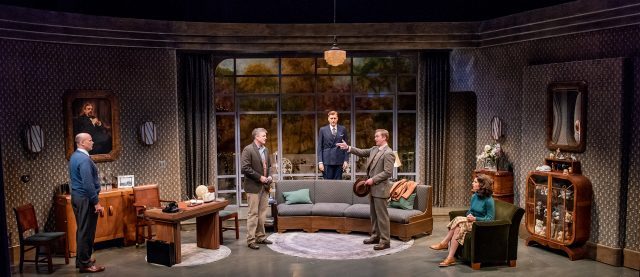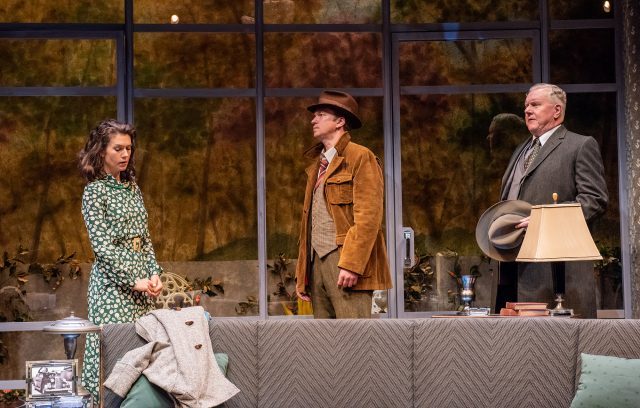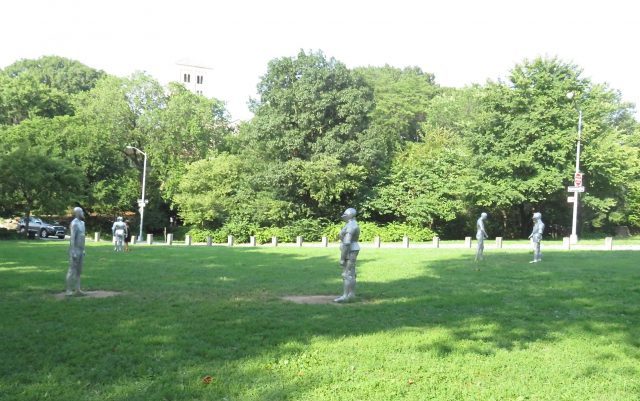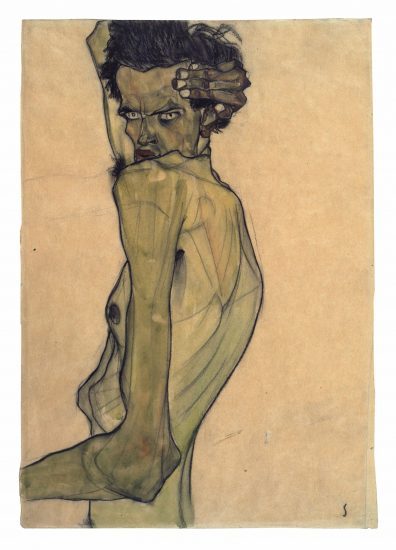
The Mint is reviving Lillian Hellman’s Days to Come at Theatre Row (photo by Todd Cerveris)
The Mint Theater
The Beckett Theatre at Theatre Row
410 West 42nd St. between Ninth & Tenth Aves.
Tuesday – Sunday through October 6, $65
minttheater.org
www.theatrerow.org
Jonathan Bank and the Mint Theater have earned their well-deserved reputation by staging a long string of exquisitely rendered productions of long-forgotten plays by little-known playwrights in addition to lesser-known works by established names. Their latest show falls into the latter category, a superb adaptation of Lillian Hellman’s second play, Days to Come, which disastrously closed after only seven performances on Broadway in December 1936. Hellman revisited the play in 1971, making “small revisions and emendations,” and it is this version that the Mint is presenting in its revival, which opened Sunday night at the Beckett Theatre at Theatre Row. Coming in between two of Hellman’s biggest successes, The Children’s Hour in 1934 and The Little Foxes in 1939, Days to Come is a timely and relevant drama that recalls Lynn Nottage’s Pulitzer Prize–winning Sweat, about a factory town facing a dilemma in Pennsylvania, as well as the Mint’s previous show, Miles Malleson’s Conflict, which dealt with class and romance in England’s political arena.
Days to Come takes place in 1936 in a small Ohio town where the local brush factory workers, led by Thomas Firth (Chris Henry Coffey), are striking for higher wages while the third-generation owner, the gentle, soft-spoken Andrew Rodman (Larry Bull), considers bringing in notorious strike breaker Sam Wilkie (Dan Daily) and his scabs. On the other side, the coolheaded, ultra-serious Leo Whalen (Roderick Hill) has arrived to lead the charge toward unionization. Rodman and Firth are childhood friends who never thought things would come to this, refusing to accept that the relationship between owner and employee is not what it once was. “We make the best brushes in America,” Firth says, defending the quality and skill of the workers. “You tell me a way out, I’ll take it,” Rodman replies. “Seven years ago we were making a lot of money. I can’t stay in business losing it this way.” Rodman is supported by his longtime attorney, the shifty, insensitive Henry Ellicott (Ted Deasy), who appears to be a little too close with Rodman’s free-spirited wife, Julie (Janie Brookshire). Rodman’s sister, the daffy, wasp-tongued Cora (Mary Bacon), keeps getting in the way, saying what’s on her mind regardless of the harm it might cause. She is also suspicious of the Rodmans’ housekeeper, Hannah (Kim Martin-Cotton), who has been helping the strikers. When Wilkie moves his two henchmen, weaselly Mossie Dowd (Geoffrey Allen Murphy) and knuckle-cracking goon Joe Easter (Evan Zes), into the Rodman home to protect the family, tensions mount and serious trouble awaits.

Julie Rodman (Janie Brookshire), Leo Whalen (Roderick Hill), and Sam Wilkie (Dan Daily) face some desperate measures in Days to Come (photo by Todd Cerveris)
Most of the drama unfolds in the Rodman living room, meticulously designed by Harry Feiner with an austere desk and bar on one side, a curio cabinet with animal figurines on the other, and a garden in the back. (There is a surprise appearance of another room in the second act.) Former Pearl Theatre artistic director J. R. Sullivan’s sensibility is an excellent fit for the Mint, slowly building the tension as the characters develop and the story breathes with an innate elegance, which is echoed in Andrea Varga’s costumes, which further delineate class and social status. The terrific cast is led by Bull (The Coast of Utopia, Nora), who is a kind of everyman and no man at the same time; he might be the scion of a rich family, but he still considers himself a man of the people. He doesn’t flaunt his wealth and power, but he also shies away from making important decisions that have crucial impact on others. Brookshire (Mary Broome, The Mound Builders) is engaging as Andrew’s wife, who is intrigued by the mysterious Whelan. And Daily (The Dining Room, Stupid Fucking Bird) is infuriatingly good as the nefarious Wilkie, a Teflon scoundrel with no sense of decency and no conscience who is only after the almighty dollar, not caring who he breaks along the way.
Shortly before the play opened in 1936, Hellman said, “It’s the family I’m interested in principally. The strike and social manifestations are just backgrounds. It’s the story of innocent people on both sides who are drawn into conflict and events far beyond their comprehension. It’s the saga of a man who started something he cannot stop.” In 1971, she wrote, “It is crowded and over-wrought, but it is a good report of rich liberals in the 1930s, of a labor leader who saw through them, of a modern lost lady, and has in it a correct prediction of how conservative the American labor movement was to become.” Hellman was certainly prescient, both in 1936, as the Great Depression gave way to the Nazis and WWII, and in 1971, as the flower-power 1960s came to a close and the country voted for Richard Nixon. And this revival is being staged at another critical juncture in American history, when income inequality is greater than it’s ever been before, corporations are considered to be people, and many unions have lost their power. “There’s no hate here,” Whalen says cynically early on. “The boss loves the workers, and the workers — the worker [referring to Firth] — loves the boss. In other towns I’ve heard that called something else.” It’s a sad state of affairs, both then and now, but it makes for great theater.







